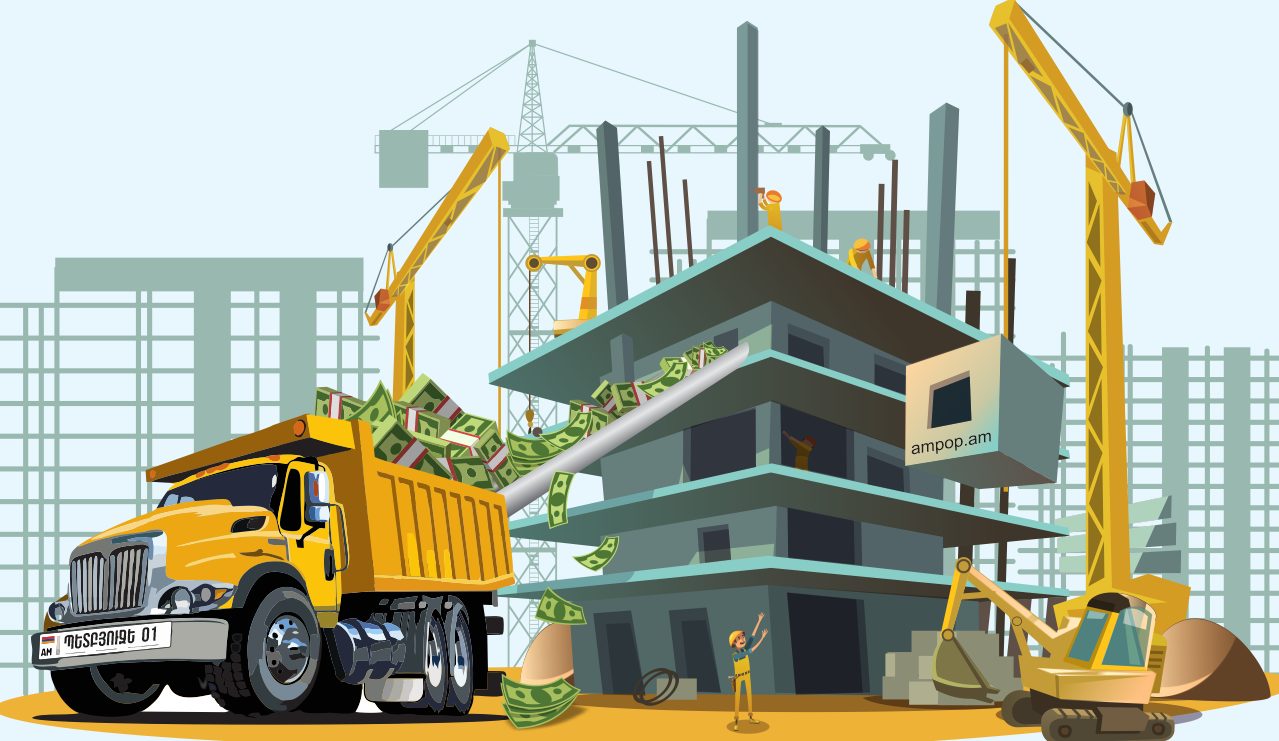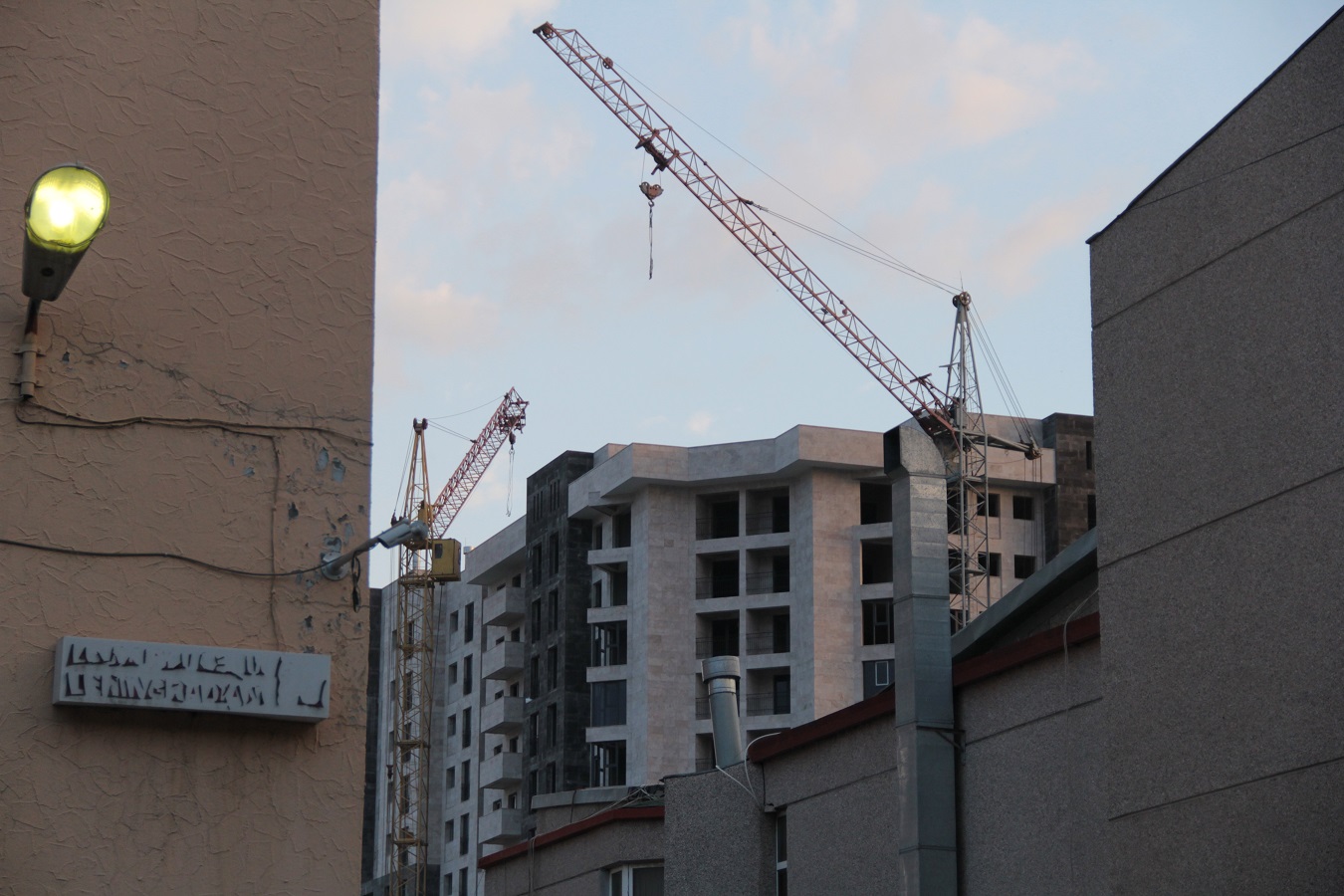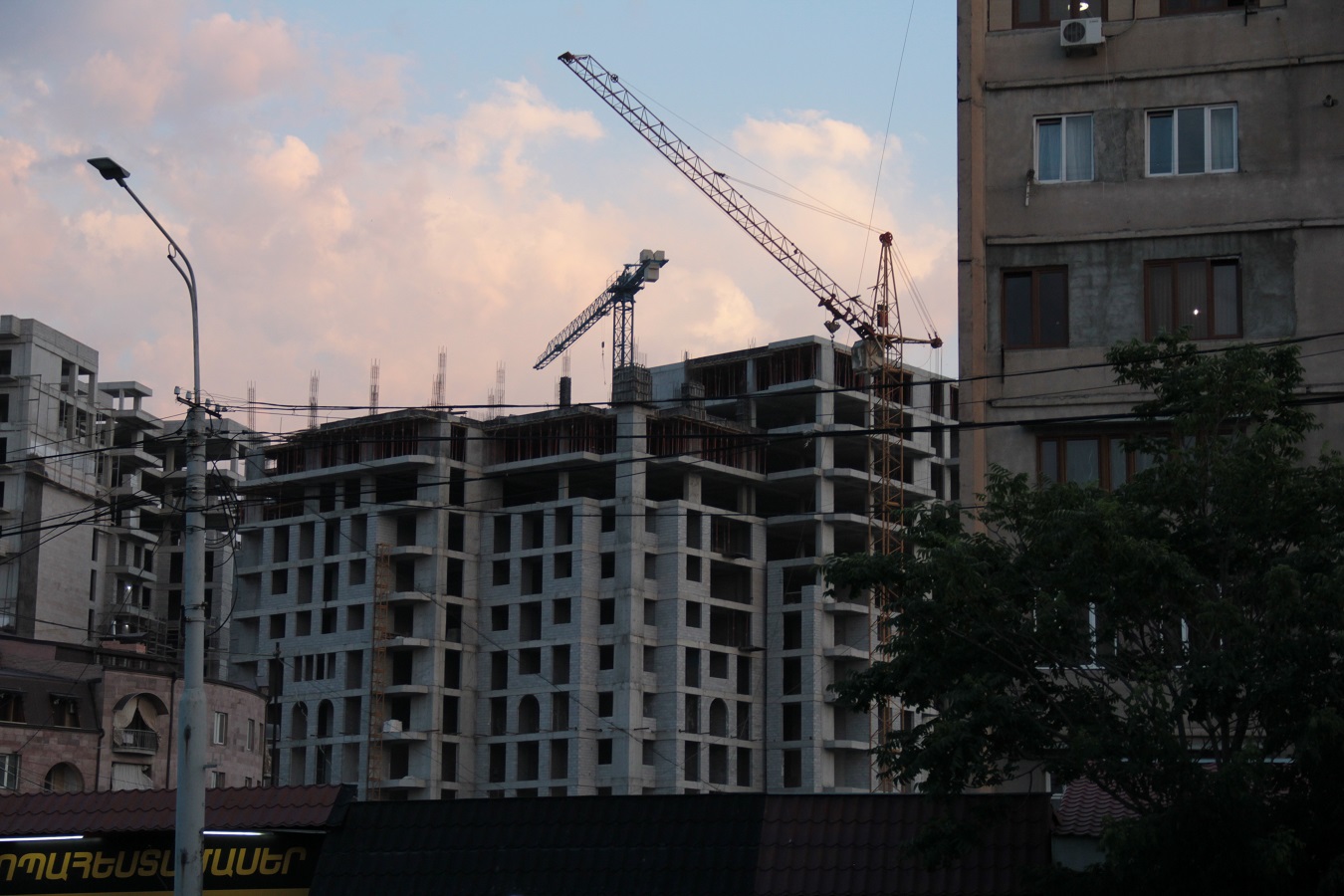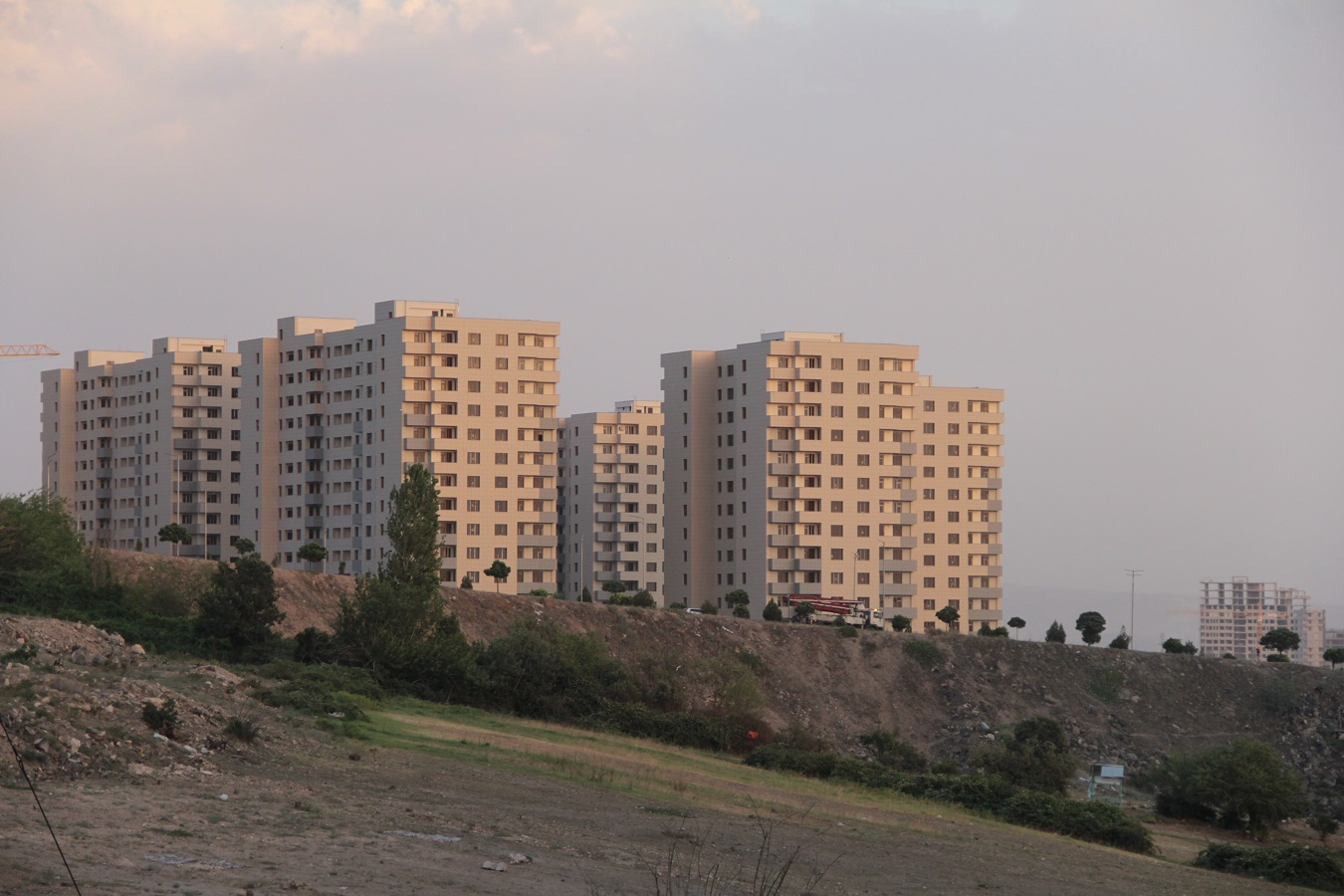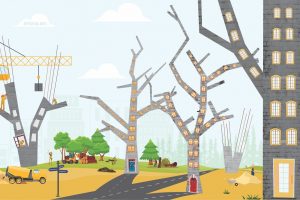Architect Albert Zurabyan says Yerevan has a master plan that is undergoing regular changes to keep up with the arising demands; yet, the lack of efficient management and control mechanisms have let the construction industry turn into a source of financial interest that outweighs the guiding principles and the integrity of urban planning.
“Construction is an industry that provides inflows into the budget, and so principles succumb to the temptation of income,” Zurabyan, the founder of the “Zaart” architectural studio, says.
Read Part I. National security concerns due to skyscrapers towering in Yerevan
The renowned architect says there is a notion of zoning, which implies every piece of land has a purpose and is classified into industrial, residential, and green areas, and changing their status is a complicated, time-consuming process, whereas in Armenia it takes just a day or two to re-classify a given land lot.
“Violations start at the top level, as you may guess. Things would be different if the authorities refrained from giving permissions, and if problems weren’t solved by imposition or force. Yerevan needs to be unloaded; there will be no turning, if the population in the capital increases for another two or three hundred thousand people,” the architect shares his concerns.
The architect’s words are proven by the construction of residential buildings and a massive entertainment center in the territory of the Dalma gardens in Yerevan. The dynamics of regressing green areas due to the unfolding wide-scale construction can be viewed on the time lapse video available on the Google map.
The construction works unfolding in the territory of the Dalma gardens in Yerevan.
Ruben Khojayan, the head of the Department for Urban Planning and Land Administration at the Yerevan Municipality, confirms the violations, referring the ratio of green and under construction areas.
“The law allows for only 40% construction in the areas of residential buildings, while the rest 60% shall remain under greenery and public services. And yet, shifts do occur,” Khojayan admits.
The official says the number of applications for construction with violation of norms received from residents is quite big. He underlines that the majority of complaints refers to construction cases that have been given permission.
“The problem is that the residents in Yerevan are reluctant to admit another building is being erected right in front of their own bloc, because it blocks their view, sunlight, and so on,” Khojayan says.
Architect Zurabyan says the complaints of the residents are justified, because the red lines set by architectural and construction norms have long been transgressed. “The requirements for the density of the buildings, the number of floors are all neglected, which raises serious concerns over security matters.”
Residential blocs lack shared inner open spaces, occupied by garages and shops, leaving no open space for residents. The streets have turned into parking lots, which deepens the problem of the overload on the roads.
And there is little perspective to stop the trend…
In 2022 alone, the amounts circulated in construction, as well as in construction-installation industries exceeded 1 trillion AMD, 300 billion (29%) of which were spent on construction of residential buildings in the capital.
According to available statistical information, residential construction both in the capital and the regions is done by the means received from the population and organizations. The state investments in Yerevan are insignificant, showing tendency to further decrease in the regions, reaching from 10% in 2018 to 2.7% in 2022.
The situation is similar with the means of humanitarian aid: while the figures of spending in Yerevan is negligible, in the regions, the average spending amounted to about 2% in a five-year span (2018-2022). The average rate of residential construction using community budget made 2.5%.
According to the RA construction norms in urban planning:
The design and planning of settlements shall envision a unified system of transportation and roads, which shall provide communication between functional zones of the settlement, the facilities in the adjacent territories, other settlements within the system of inhabitation, extraterritorial transportation facilities, as well as ensure the usability and safety of the motorcar roads.
“I will refrain from commenting on the situation with infrastructures; the residential blocs are erected in extremely short time, lacking schools, kindergartens, theaters… And then, part of new buildings needs household gas and water supply infrastructures,” architect Zurabyan continues.
Population is the largest consumer of household gas, with the consumption rates increasing beginning 2018. The hikes in the consumption of natural gas are explained by increased reliance on it in the energy sector, which is due to the switch to the thermoelectric stations rather than nuclear power plant as energy providers.
Zurabyan underlines the change in attitudes have been in place starting 1950s, pushing residential development of lands for ideological purposes, on the one hand, and the growing influence of the Western civilization, on the other hand, which went against the principles and the concept of urban planning in Yerevan set by renowned Armenian architect Alexander Tamanyan. Numbers now outweigh the idea; the popping buildings created confusion in the urban planning industry.
Wide open-space inner areas, according to the architect, confined by 4 to 5-story buildings, would play fundamental role in Tamanyan’s concept of the master plan.
“Inner spaces were interrelated with the residential blocs; grandmothers would watch out their grandchildren playing outside, from their balconies. Everything was in harmony in the master plan from both the urban planning and architectural perspectives.”
Now, the number of 4 to 5-story buildings tends to decrease, replaced by six, eight, nine-story, or even higher structures.
As of early 2022, 2130 (43%) out of 4982 residential buildings in Yerevan, have nine or more floors, and 267 of them are six to eight floors in height.
The dynamics observed in the industry reveals, the increase in the number of apartments in the country is mostly related to the construction of residential housing in the capital.
238,680 apartments (with a total area of 16,1 million square meters) have been registered for the mentioned period and make 56% of all apartments in the republic.
Architect Zurabyan points to the need to develop a national strategy as a solution.
“A national strategy shall come as a priority to guide the country as it develops and shall be followed regardless of the political force in power. We won’t be able to unload Yerevan and ensure proportionate development of the country unless we know what’s to be built in every town or village,” Zurabyan says.
The full interview in Armenian with architect Albert Zurabyan is available in audio format.
Zurabyan suggests unloading Yerevan by means of boosting the development of the towns and villages in provinces. That implies creating jobs and favorable conditions of life beyond Yerevan, and first and foremost, in borderland settlements for people to live and to work there. The architect believes, to unburden the capital, Gyumri, Vanadzor, as well as other comparatively large towns shall have master plans.
“That means small projects shall be given priority; not the other way around. The general economic development plan shall guide us out of the situation, where we have just one state, one city, for that is a way to ensure proportionate development for the country,” the architect concludes.
At the present, Yerevan leads in at least four sectors of economics: services (87%), retail commerce (70%), construction (43%), and even production.
34% of the production in Armenia is centralized in the capital, 22% is organized in the adjacent regions of Kotayq and Ararat, and another 22% in Syunik, which is due to mining production. The other seven provinces have only 3% of the production in the republic.
Albert Zurabyan says the norms related to the production are violated, too, for the plants and factories are supposed to be surrounded by green areas, separated from residential areas, to ensure consistency with the norms, which is not in place.
“The statements that the reason behind the situation is the lack of norms is simply not true. Everybody talks about the need to unload the center of Yerevan, but no actual steps are taken. The inspectorate, the municipality, in this particular case, fails to perform its functions, and I am afraid we will reach the point of no return. This is in fact a collapse that we have in Yerevan already…”
To be continued․․․
Authored by Karine Darbinyan
Illustration by Anush Baghdasaryan
Data analysis and charts by Karine Darbinyan and Garik Harutyunyan
Interviews by Lilit Poghosyan
Photos by Elen Mikayelyan
This multimedia project has been created as part of the project titled “The Link Between Housing Construction in Yerevan and Forced Migration Caused by the NK and Ukrainian Wars” which is supported by the ForSet Data Communication Fellowship Program.
© All the stories, infographics and other visuals bearing the Ampop Media logo is possible to publish on other audiovisual platforms only in case of an agreement reached with Ampop Media and/or JFF.
Փորձագետի կարծիք
First Published: 26/08/2023


